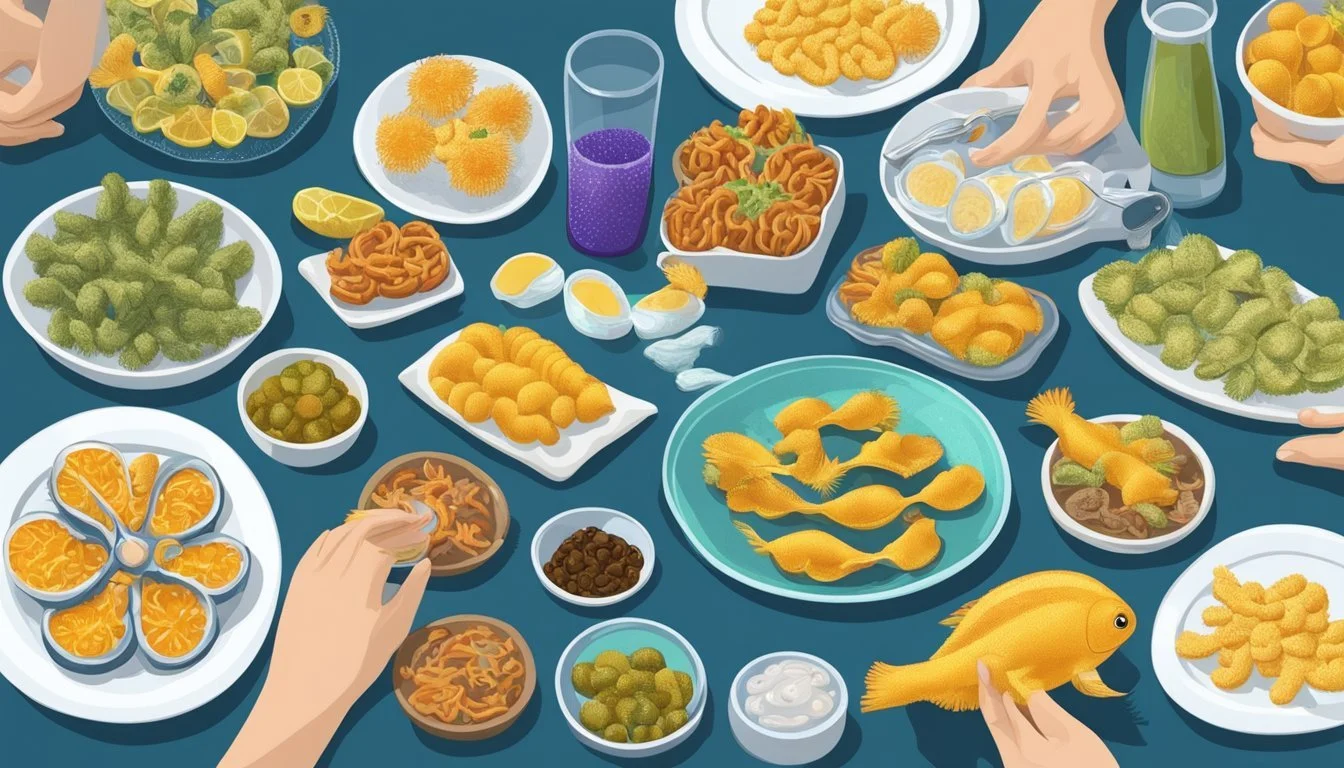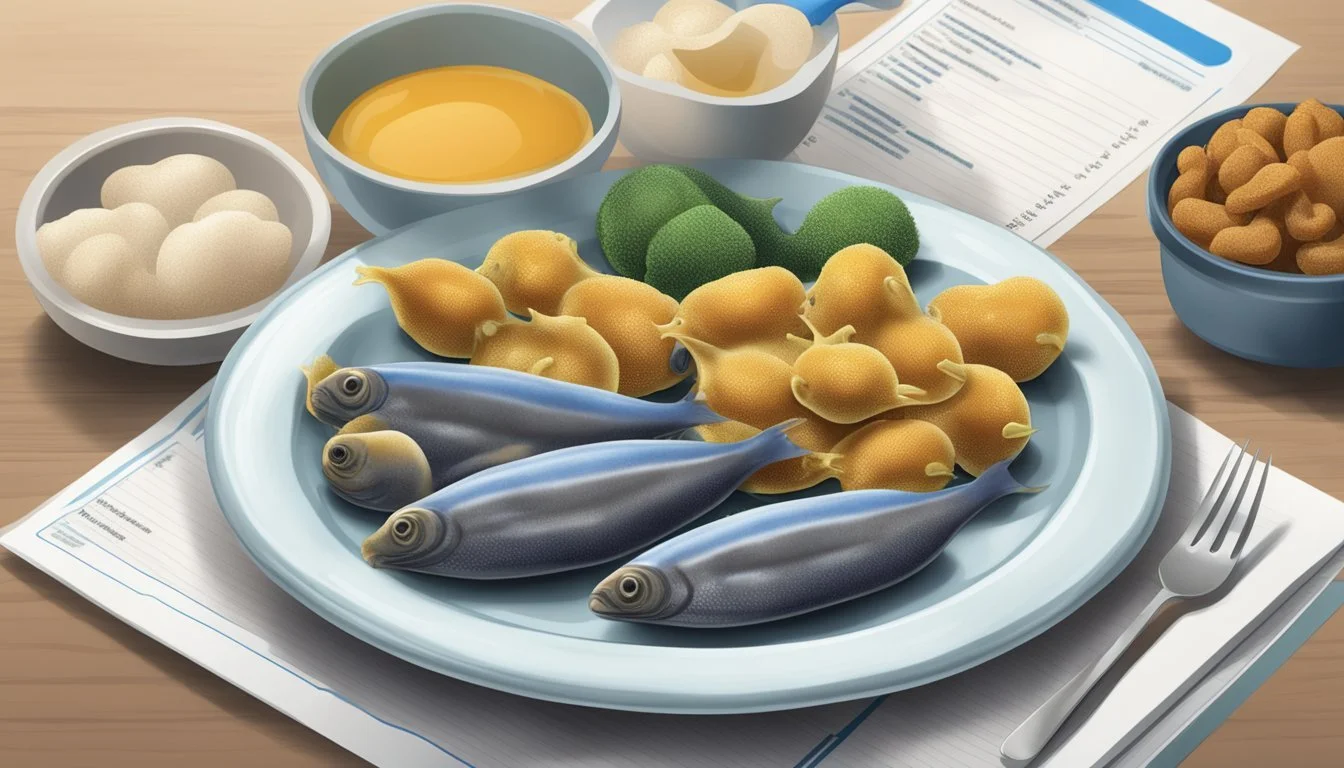Can Diabetics Eat Sea Squirts?
Health Benefits and Precautions
When managing diabetes, dietary choices are crucial in maintaining stable blood sugar levels. Sea squirts, known scientifically as ascidians, have recently garnered attention in the health community for their potential benefits. Not only are sea squirts low in sugar, but they also contain compounds that may aid in reversing signs of aging and promoting overall health.
Sea squirts are marine invertebrates rich in essential nutrients, including proteins and omega-3 fatty acids. These nutrients are beneficial for cardiovascular health, which is often a concern for individuals with diabetes. Additionally, the low carbohydrate content of sea squirts makes them a suitable option for those needing to keep their blood sugar levels in check.
Moreover, scientists have discovered unique compounds in sea squirts that may offer antioxidative properties. This can be particularly advantageous for diabetics, who often face oxidative stress as a complication of the condition. By incorporating sea squirts into a balanced diet, diabetics might find an exotic yet nutritious addition to their meal plans.
Understanding Diabetes and Nutrition
This section explores the importance of diet in diabetes management and the nutritional benefits of sea squirts. Focus is placed on how specific dietary choices can impact blood sugar and overall health.
The Role of Diet in Diabetes Management
Diet plays a crucial role in managing diabetes, particularly through the regulation of blood sugar levels. Carbohydrates are a primary focus, as they directly impact blood sugar. Reducing carbohydrate intake can help manage insulin resistance and improve blood sugar control.
Foods with a low glycemic index are emphasized, as they release glucose more slowly, preventing spikes in blood sugar. Protein and healthy fats, such as those found in seafood, can improve insulin sensitivity and provide satiety, making it easier to manage weight—a key aspect in diabetes management.
Nutritional Profile of Sea Squirts
Sea squirts, although less common in Western diets, offer a rich source of protein and are low in carbs. They contain omega-3 fatty acids, which are beneficial for glucose metabolism and reducing inflammation associated with diabetes.
Additionally, sea squirts provide an array of vitamins and minerals, such as Vitamin B12 and iodine, supporting overall health. The cholesterol content in sea squirts is moderate, making them a healthy addition for those monitoring their blood lipid levels.
Sea Squirts in the Diabetic Diet
Sea squirts, known for their unique nutritional profile, may offer various benefits for individuals with diabetes, particularly in managing blood sugar levels. However, certain considerations and precautions are essential to keep in mind.
Potential Benefits for Blood Sugar Control
Sea squirts contain plasmalogens, which have shown promise in reversing some signs of aging in lab studies. These compounds might also play a role in improving insulin sensitivity and glucose metabolism. Improved insulin sensitivity is crucial for individuals with type 2 diabetes, as it helps in better utilization of glucose by the body, potentially aiding in lowering blood sugar levels.
Additionally, sea squirts are low in saturated fat and rich in omega-3 fatty acids, which are known to reduce inflammation. Chronic inflammation is a risk factor for heart disease and can negatively impact blood sugar control. Including omega-3-rich foods like sea squirts in a diabetic diet could, therefore, support better overall health and glucose regulation. Furthermore, some studies suggest omega-3 supplementation might also lower the risk of developing fatty liver disease, a common complication in diabetic patients.
Considerations and Precautions
Despite the potential benefits, there are important considerations and precautions for diabetics thinking of adding sea squirts to their diet. One key issue is the sodium content, as high sodium intake can exacerbate heart disease and other health problems common in diabetics. Monitoring and moderating sodium consumption when eating sea squirts is advisable.
Another concern is the risk of allergies. Sea squirts, like other seafood, can trigger allergic reactions in some individuals. It's crucial for people with known seafood allergies to avoid sea squirts or consult a healthcare provider before consumption. Additionally, the mercury content in sea creatures is another factor to consider, though sea squirts are generally low in mercury compared to other seafood options.
Understanding these factors can help diabetics make informed decisions about including sea squirts in their diets effectively and safely.
Incorporating Sea Squirts into Meals
Sea squirts, also known as tunicates, can be a healthy and versatile addition to a diabetic-friendly diet. Exploring various preparation methods can enhance their flavor while retaining their nutritional benefits.
Preparing Sea Squirts for Optimal Nutrient Retention
When incorporating sea squirts into meals, preparation methods such as baking and grilling are recommended. These methods help to maintain the high protein content and other essential nutrients.
Before cooking, sea squirts should be thoroughly cleaned under cold water. Removing the outer tunic can improve both the taste and texture, making them more palatable.
Baking sea squirts with a light seasoning of herbs and a drizzle of olive oil can enhance their natural sweetness. Grilling offers a smoky flavor and can be done with minimal seasoning, bringing out the sea creatures' inherent taste.
Raw sea squirts are an option in certain cuisines, where their unique flavor can be enjoyed in moderation. They can be sliced thinly and served with a light vinaigrette, adding a refreshing seafood element to salads.
Comparative Analysis with Other Seafoods
When comparing sea squirts to common seafood like salmon, trout, and sardines, specific differences in nutritional value and effects on heart health become evident. These comparisons highlight the unique benefits and limitations of incorporating sea squirts into a diabetic-friendly diet.
Nutritional Value of Sea Squirts vs. Common Fish Varieties
Sea squirts are known for their unique nutritional profile. They are low in calories and contain a significant amount of protein. Additionally, sea squirts are a good source of taurine and certain vitamins, such as B12 and D.
Salmon, mackerel, and sardines are rich in omega-3 fatty acids, which are important for heart health. These fatty fish varieties offer high levels of eicosapentaenoic acid (EPA) and docosahexaenoic acid (DHA), which have anti-inflammatory effects.
Trout and cod also provide beneficial omega-3s but in lower amounts compared to salmon and sardines. Despite this, they still serve as excellent low-fat protein options.
In contrast, sea squirts do not offer substantial amounts of omega-3 fatty acids. Therefore, while they contribute protein and certain vitamins to the diet, they may not provide the cardiovascular benefits associated with omega-3-enriched fish.
Impact on Blood Lipid Profiles and Heart Health
Sea squirts may positively influence blood lipid profiles due to their low-fat content and presence of bioactive compounds. They can help in maintaining a balanced diet, important for managing diabetes and preventing complications.
Fatty fish like salmon and mackerel have been shown to reduce LDL cholesterol and triglycerides. The American Heart Association recommends incorporating these into the diet for improved heart health and reduced cardiovascular risk.
Sardines and trout offer similar benefits, helping to lower blood pressure and improve overall cardiovascular markers. This is partly due to their rich omega-3 content which aids in reducing inflammation and promoting heart health.
While sea squirts offer some benefits, their lack of significant omega-3 content means they might be less beneficial for heart health compared to common fatty fish. They can still be a valuable addition to a varied diet but should be complemented with other seafood rich in omega-3s to optimize cardiovascular outcomes.
Dietary Recommendations and Guidelines
Diabetics need to follow specific dietary guidelines to manage their condition effectively. These guidelines focus on maintaining balanced blood sugar levels through informed food choices and portion control.
Expert Advice from Health Organizations
Health organizations like the American Diabetes Association (ADA) and the FDA provide essential guidance for diabetics. They recommend a diet rich in non-starchy vegetables, fruits, whole grains, and lean protein.
The ADA suggests reducing carbohydrate intake to improve blood sugar control. Carbohydrates should make up 26-45% of total calories. Avoiding high glycemic index foods can help maintain stable blood sugar levels.
Healthy fats from sources like nuts and seeds should be included. Moderate alcohol consumption is allowed, but it must be factored into the daily carbohydrate count. Portion control and regular meal timing are crucial for managing diabetes.
Building a Balanced Diabetic Meal Plan
A balanced diabetic meal plan includes a variety of nutrients to ensure comprehensive dietary needs are met. Start with a foundation of non-starchy vegetables such as leafy greens, peppers, and cucumbers.
Lean proteins like chicken, fish, tofu, and beans should be included to support overall metabolic health without causing spikes in blood sugar. Whole grains such as brown rice, quinoa, and oatmeal provide fiber which helps in digestion and blood sugar regulation.
Fruits should be consumed in moderation due to their natural sugars. Opt for berries, apples, and citrus fruits which have a lower glycemic index. Nuts and seeds offer healthy fats and proteins that can help in maintaining insulin resistance.
Combining these components in every meal can aid in stable blood sugar levels and overall diabetes management. Use the ADA’s guidelines to build varied and nutritious meals that cater to individual needs.
Additional Health Considerations
When considering sea squirts as part of a diabetic diet, it's essential to evaluate their health impacts and explore viable food alternatives.
Sea Squirts and Overall Well-Being
Sea squirts are a unique marine food primarily consumed in certain cultures. They are low-fat and contain various nutrients that can be beneficial.
They're rich in omega-3 fats, which may help improve insulin sensitivity and reduce inflammation. Additionally, sea squirts have selenium, an antioxidant that may support thyroid function and combat oxidative stress, which can be beneficial for diabetes management.
Low mercury levels in sea squirts make them a safer seafood choice. They also contain vitamin D, essential for bone health and immune function. For people with diabetes, maintaining adequate vitamin D levels is crucial to avoid complications such as cardiovascular diseases.
Suitable Alternatives for Optimal Health Outcomes
For those who may not prefer sea squirts, several alternatives can provide similar health benefits. Tofu and poultry are excellent low-fat protein sources. Beans are rich in fiber and protein, helping to stabilize blood sugar levels.
Fatty fish like herring and mackerel are high in omega-3 fatty acids. These nutrients are pivotal in reducing the risk of non-alcoholic fatty liver disease and improving heart health.
For healthy fats, incorporate avocado, extra virgin olive oil, and flaxseed oil into the diet. These fats support overall well-being and may reduce inflammation, protecting against coronary artery disease and other complications associated with diabetes. Adding vegetable oils like canola and soybean oils can also contribute to a balanced diet.








